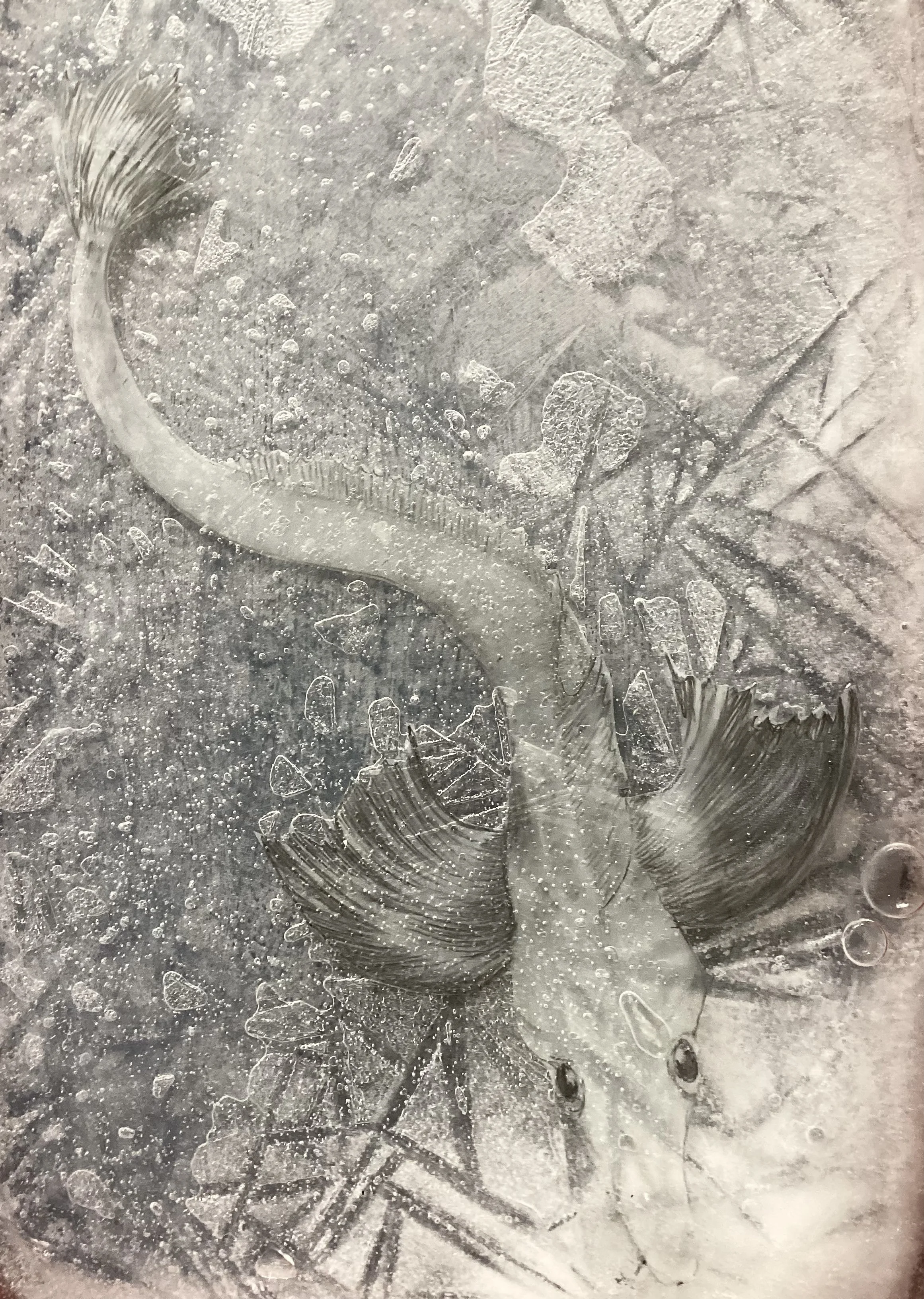Icefish (b).
Icefish
Drawing in frozen sea water.
These fascinating fish live within the deep frigid waters of Antartica. Their bodies are translucent, their blood clear or white, enabling them to survive in below freezing temperatures..
A recent study group discovered an estimated 60 million of their nests, covering roughly 240 sq kilometres of the sea bed, a valuable source for the local eco system.
Unfortunately the future survival of the icefish is now in question as certain areas of Antarctica’s waters are beginning to heat up faster than the global average.
Their changing habitat reflects much of my ongoing interest and research in the fragility of many coastal regions, with sea rise and disappearing edgelands partially due to the accelerated melting of sea ice
Artist: Helen Goodwin
Fish Profile:
Conservation status
‘Icefish’ covers many species including members of the Channichthyidae, or Chaenichthyidae family. Also known as Crocodile Icefish and White Blooded Fish their blood has less oxygen - they lack red blood cells and haemoglobin.
They are vulnerable to rising sea temperatures which melt the ice covering their nests - exposing young fish to predators. Shifting algal patterns also affect their food sources. Moreover, Icefish create localised and concentrated communities so local environmental changes could destroy an entire colony.
Pike Icefish Champsocephalus esox is listed as Vulnerable by The IUCN Red List. The species has declined by up to 80% since the 1980s along the Chilean coast of the southern Patagonian Sea. Less is known about the population living in the Argentinian region. The species are limited to seas with low temperatures and high oxygen content and are vulnerable to climbing sea temperatures as well as to bycatch and invasive salmon.
